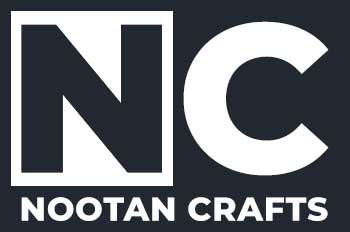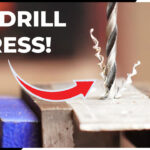Spade bit vs auger bit—which one is right for your project? The confusion is natural because these bits belong to the same category. However, they offer distinct characteristics: spade bits are more affordable and quicker for rough cuts, while auger bits provide cleaner and deeper holes with precision.
In the world of woodworking, choosing the right drill bit for the job is critical because it can affect your outcome. I will help you select between spade and auger bits in this article by discussing their design, applications, and strengths. So, let’s do this!
Also read: Difference between an angle grinder vs die grinder
What is a Spade Bit?

Spade bits, often called “paddle bits,” can be recognized by their flat, paddle-shaped heads. They are designed to quickly bore through wood, typically at shallow depths. These bits feature two sharp edges at each side of the head and a pointed tip for guiding. Spade bits are cheaper due to their straightforward design, which makes them a favorite for general wood drilling tasks, such as making rough holes to pass wires where precision isn’t necessary.
Key Features of Spade Bits
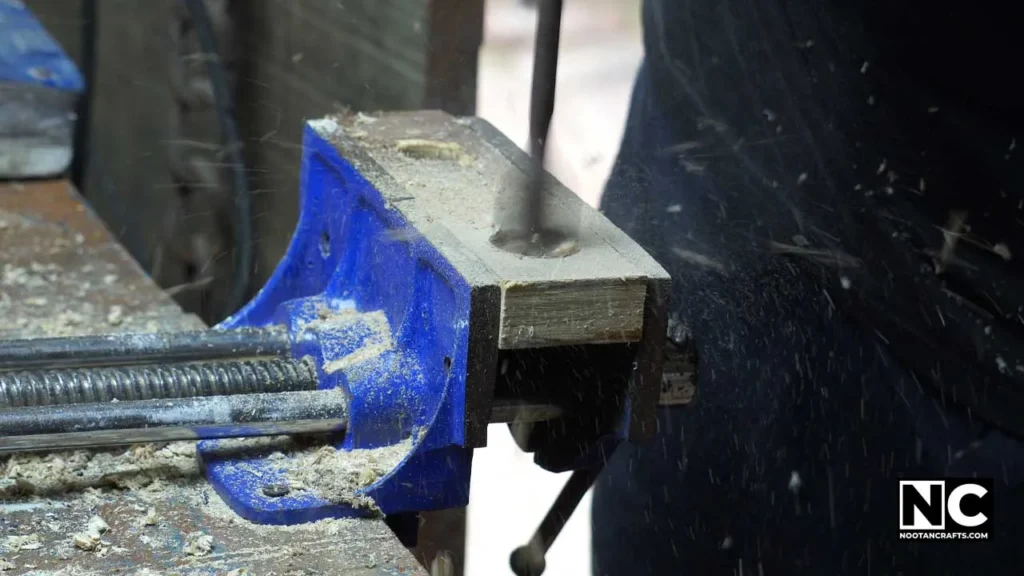
- Cost-Effective: The simple design makes spade bits very budget-friendly.
- Fast Cutting for Rough Holes: They are ideal for creating quick, rough holes, often used for running wires or pipes through studs.
- Easy to Use at an Angle: Spade bits can be angled easily to create tapered or non-standard holes, which helps shape the hole.
Drawbacks of Spade Bits
- Rough Hole Finish: Spade bits often leave rougher edges with some splintering, especially if the drilling speed is too fast.
- Limited Depth: Spade bits are great for shallow drilling, but they lack a self-driving feature and require more effort to go deeper.
Recommended Products!
Last update on 2025-08-28 / Affiliate links / Images from Amazon Product Advertising API
What is an Auger Bit?
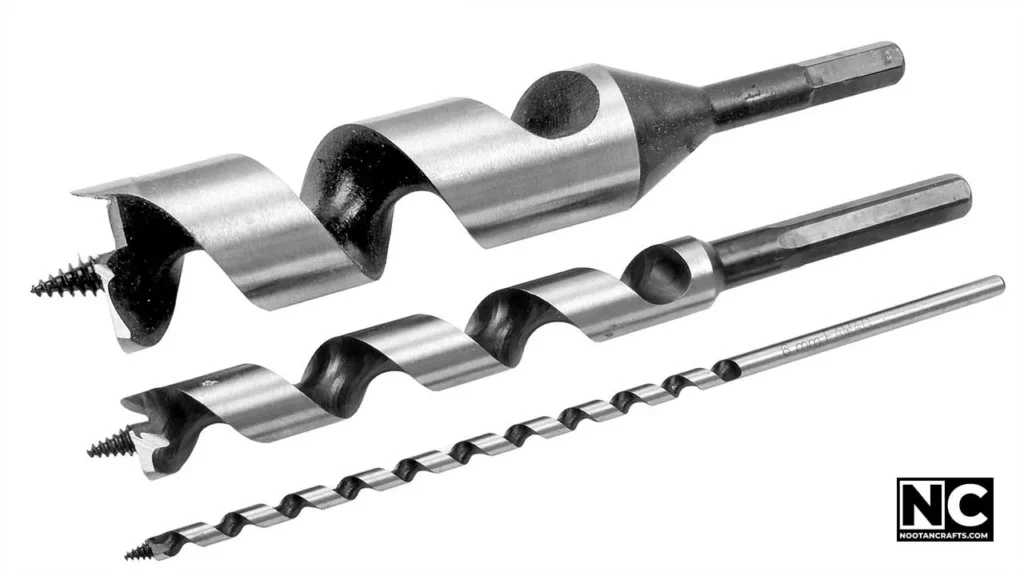
Auger bits can be identified from a spiral, screw-like structure with a threaded tip at the front. This design helps the bit self-drive into the material without extra effort. The spiral flutes along the shaft also efficiently remove wood shavings, making auger bits perfect for drilling deep, clean holes in wood, including hardwoods.
Key Features of Auger Bits
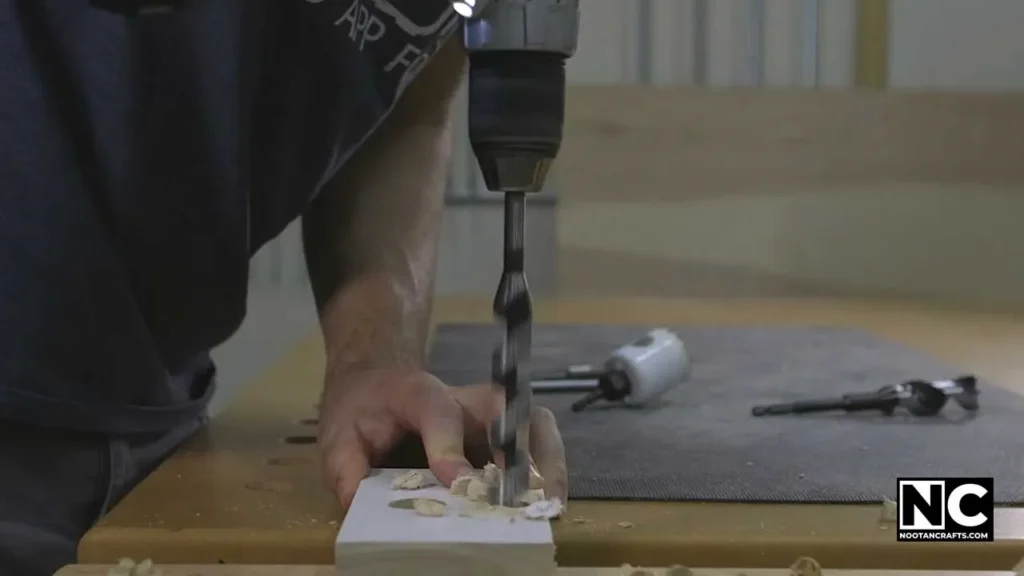
- Precision and Clean Cuts: The unique design of auger bits ensures controlled, splinter-free cuts.
- Self-Driving Capability: The threaded tip automatically pulls the bit into the material, making deep drilling more efficient without requiring extra force.
- Effective Shaving Removal: The fluted design efficiently clears away debris and keeps the hole unclogged, ensuring easier drilling.
Drawbacks of Auger Bits
- Slower Speed: Auger bits drill more slowly than spade bits, emphasizing accuracy and depth over speed.
- Higher Cost: Their complex design and specialized function make auger bits pricier than spade bits.
Recommended Products!
Last update on 2025-08-28 / Affiliate links / Images from Amazon Product Advertising API
Spade Bit vs Auger Bit: In-Depth Comparison
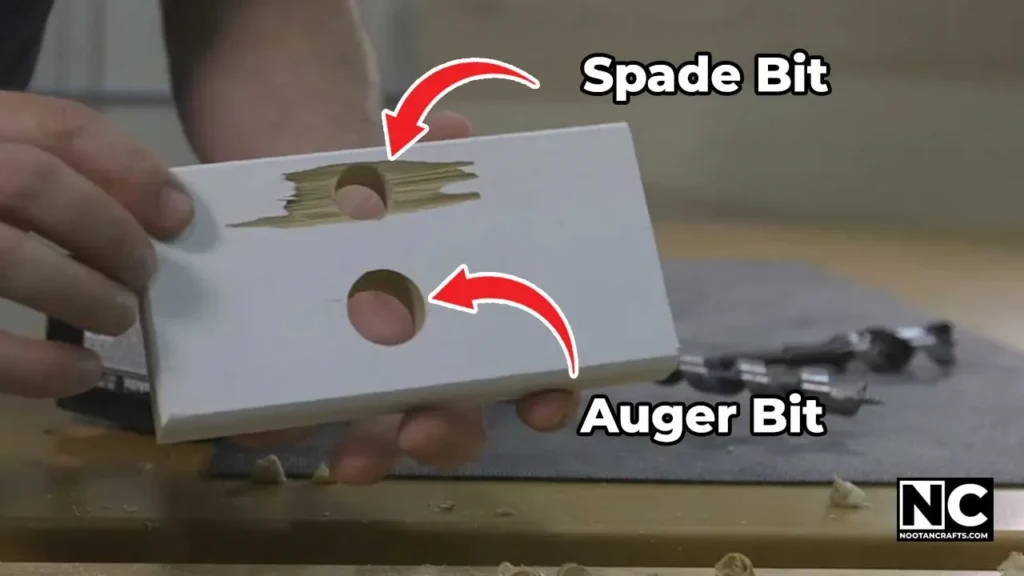
| Feature | Spade Bit | Auger Bit |
| Design | Flat, paddle-shaped head | Spiral, with a threaded self-feeding tip |
| Speed | Fast for shallow drilling | Slower, designed for deeper drilling |
| Depth Capacity | Limited, suitable for shallow holes | Great for deeper holes, often up to 600mm |
| Hole Quality | Rough edges, some splintering | Clean, smooth edges with minimal splintering |
| Self-Driving | No, requires applied force | No, it requires applied force |
| Shavings Removal | Requires frequent clearing | Efficient removal with fluted design |
| Ideal for | Quick, rough holes in framing | Precise, deep holes in woodworking and carpentry |
| Cost | Budget-friendly | More expensive due to design complexity |
Practical Applications
1. By Application
Auger Bits: These are commonly used for high-precision and professional woodworking, furniture making, and applications requiring a deep and clean cut. They’re exceptional for crafting projects, such as furniture joints, where the hole’s finish is essential.
Spade Bits: They are more suitable for rough cuts where precision isn’t necessary, such as creating quick holes in studs for electrical conduits or pipes.
2. By Shape & Design
Auger Bit: It features a spiral shape with a sharp, self-feeding screw-like tip that ensures accurate entry and exit points. Its design allows for deeper drilling with consistent precision.
Spade Bit: This has a flat, spade-shaped head with two cutting edges. It is suitable for angled drilling or when hole customization is needed. However, it doesn’t provide as clean a cut as the auger bit and often causes wood splintering and rough edges.
3. By Cutting Ability
Auger Bits: They are recommended for precision work. Their spiral design and stable tip make it easy to drill straight holes that retain the desired diameter without wobbling.
Spade Bits: These are excellent for quick, rough holes. They allow for slight angle adjustments, which is useful for creating non-standard holes.
4. By Drilling Depth
Auger Bits: Capable of reaching up to 600mm in depth due to the self-driving tip, perfect for thick wood applications.
Spade Bits: Though they can reach modest depths quickly, due to the lack of a self-driving tip, they may not go as deep as an auger bit and require more force.
5. By Cost
Auger Bits: These are more expensive due to the complex design and additional features for precision.
Spade Bits: Generally more affordable, making them a budget-friendly choice for less precise work.
Choosing Between Spade Bits and Auger Bits
The choice between spade bits and auger bits boils down to project demands:
Spade bits are an excellent choice for quick, shallow drilling where speed and cost matter more than the finish.
Auger bits are an exceptional choice for deep, precision drilling with minimal splintering, particularly if working with hardwood or projects that demand precise, clean holes.
FAQs
1. Which bit is better for precise drilling?
Auger bits are preferred for precision due to their spiral design and self-feeding tip, which ensures stable, clean cuts.
2. Can spade bits handle hardwood?
Yes, but if forced, they may cause splintering or get stuck in hardwoods. They are generally recommended for softwood and shallow holes.
3. How do auger bits handle shavings?
The spiral fluting on the auger bit effectively clears shavings as you drill, preventing clogging and enabling cleaner holes.
4. Are auger bits worth the cost?
If you want to make deep and precise holes, auger bits are definitely worth investing in. However, for simpler and shallow holes, spade bits are more than enough.
5. Can I use a spade bit for angled holes?
Yes, spade bits allow for slight adjustments during drilling, making them suitable for angled or tapered holes.
Spade Bit vs Auger Bit – Conclusion
Now you know both spade bits and auger bits have unique strengths in woodworking, and the choice depends on your requirements. Spade bits offer a practical and affordable solution for rough, rapid holes. Auger bits are the way to go for clean, deep cuts with precision.
Understanding these differences will help you select the right bit for each project, which can enhance the quality and efficiency of your work. If you want to share your experience or have any feedback, please write in the comments. Thanks for reading!
